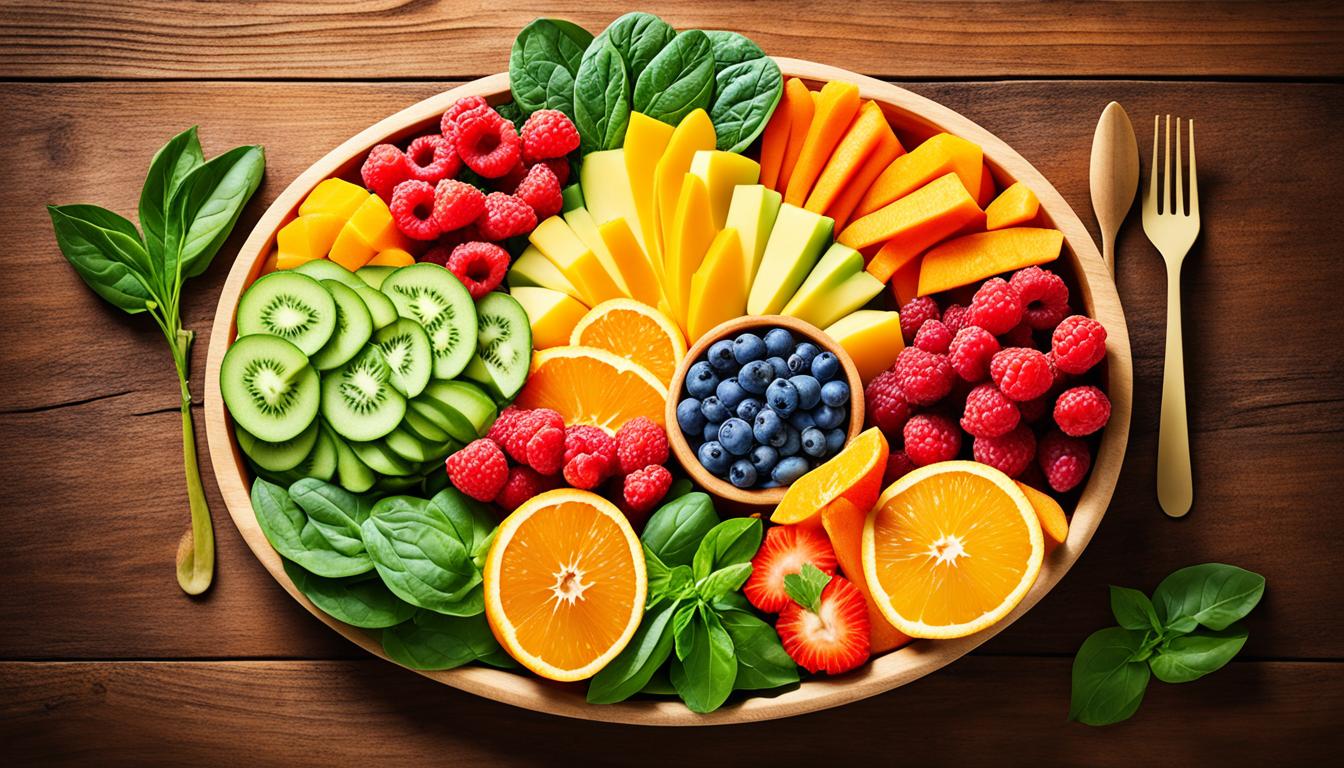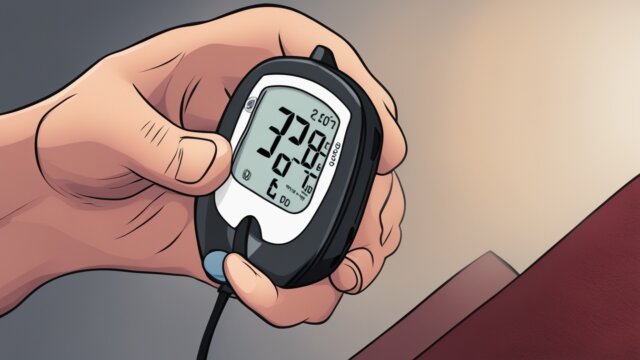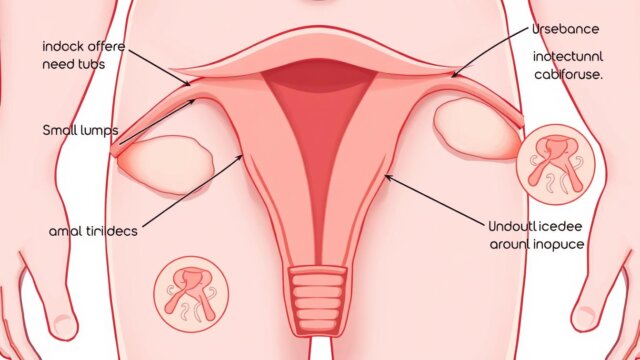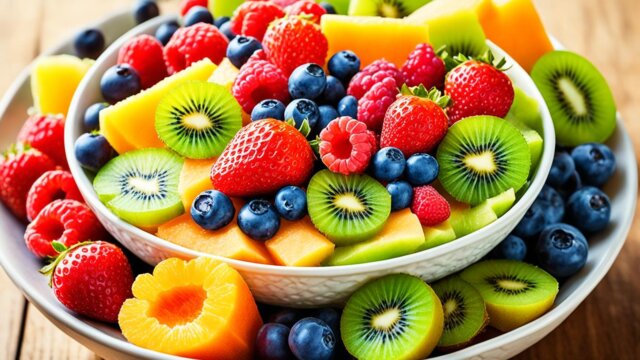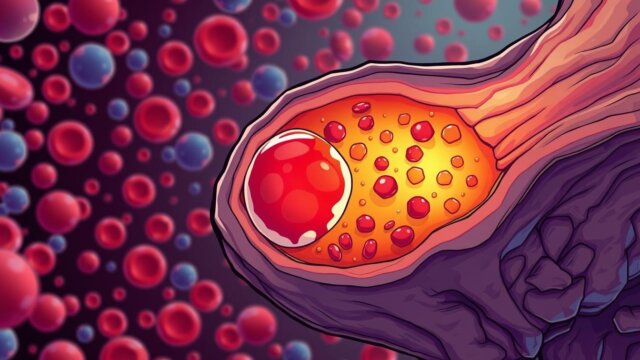FTC disclaimer: This post may contains affiliate links and we will be compensated if you click on a link and make a purchase.
Around one in 20 folks in the US deal with hemorrhoids, says the NIDDK. And about half of all those over 50 will face this issue. The good news? Eating lots of fiber from whole foods can help. It might even stop hemorrhoids from happening.
Typically, adults should aim for 14 grams of fiber for every 1,000 calories to keep things moving smoothly. Let’s delve into the top fiber-rich foods that help fight hemorrhoids.
Key Takeaways
- Fiber-rich whole foods can help manage and prevent hemorrhoids
- Most people need 14 grams of fiber per 1,000 calories consumed
- Foods like corn, prunes, pears, berries, and artichokes are high in fiber
- Consuming processed, sugary, or fatty foods can increase hemorrhoid risk
- A high-fiber diet combined with increased water intake can improve bowel movements
Introduction to Hemorrhoids and the Role of Fiber
Hemorrhoids, often called “piles,” are a digestion issue many face. These are inflamed veins around the anus or in the rectum, causing discomfort and sometimes bleeding. Knowing about hemorrhoids, their types, causes, and benefits of fiber is important for managing them.
What are Hemorrhoids?
Hemorrhoids are swollen veins in the rectum or anus. They may be external, under the skin near the anus, or internal, inside the lower rectum and anus. This condition is common, affecting 1 in 20 people in the U.S. and half of adults over 50.
Types of Hemorrhoids
The two main types of hemorrhoids are:
- External Hemorrhoids – They form under the skin near the anus. They can be felt and might be painful, especially when you go to the bathroom.
- Internal Hemorrhoids – They form inside the anus and lower rectum. They are often without pain but can bleed or cause discomfort when prolapsed (protrude) through the anus.
Causes and Risk Factors
Mixed factors lead to hemorrhoids, including habits like straining during bowel movements. Other causes are obesity, pregnancy, being inactive, and not enough fiber or water in your diet.
A low-fiber, high-dairy diet can lead to constipation, which increases hemorrhoid risk.
How Fiber Can Help
Eating more fiber can help prevent and treat hemorrhoids. A diet rich in fiber and drinking enough water softens the stool. This means less strain when going to the bathroom. Fiber keeps your bowel movements regular, eases hemorrhoid symptoms, and stops new ones from forming.
“Adding more fiber to your diet? Remember to do it slowly to avoid too much gas.”
Fiber Rich Foods for Hemorrhoids
Eating more high fiber foods can help with hemorrhoids. The best ones include whole grains, fruits, veggies, and nuts. These foods have soluble and insoluble fiber. This helps make your stool softer, add weight to it, and move through your colon faster. These actions lessen the pain of hemorrhoids.
Most Americans don’t eat enough fiber. They need 25-30 grams a day. Adding more high-fiber foods can improve your health. It can also reduce hemorrhoid issues.
- Legumes, such as beans, offer a lot of fiber. You get 7-10 grams per 1/2 cup.
- Nuts, like almonds and pecans, have about 3 grams of fiber per serving.
- Edamame (soybeans) provides 3 grams of fiber in a 1/2 cup.
- Fruits have 3-4 grams of fiber per serving.
- Leafy greens, broccoli, and other veggies give 4 to 5 grams of fiber per cup.
Don’t eat foods low in fiber too often. These include white bread, dairy, meat, and processed items. They might make constipation and hemorrhoids worse.
More high-fiber foods in your diet can help with hemorrhoids. Choosing these foods can make your stool softer. This can reduce straining and the pain you feel from hemorrhoids.
“A high-fiber diet is recommended to help maintain regular bowel habits and prevent constipation.”
Fiber is good for managing hemorrhoids. But, it might not help everyone. If fiber makes your condition worse, talk to a doctor. They can help you find the best amount for you.
The Importance of Fiber
Fiber is key for a healthy gut and less pain from hemorrhoids. Adding fiber foods to your diet softens stool. This lowers the strain on your body and prevents more pain in your bottom.
Not all fiber foods are the same. Foods like red meat and dairy can make hemorrhoids hurt more. They’re low in fiber and can cause constipation. Try not to eat too many processed or spicy foods either. They can upset your stomach more.
For different treatments, hemorrhoid artery embolization (HAE) has worked for some with internal hemorrhoids. Including lots of high-fiber foods and avoiding bad ones can help a lot. It’s a good way to deal with hemorrhoids and be kind to your body.
Whole Grains for Hemorrhoid Relief
Whole grains help a lot with hemorrhoids because they have insoluble fiber. This type of fiber is in unprocessed whole wheat products. These include wheat bran, shredded wheat, barley, oats, and whole wheat bread, pasta, and cereals. They make stool bigger and help it move through your body faster.
Wheat Bran and Shredded Wheat
A small amount of bran cereal, about 1/3–1/4 cup, has a lot of fiber. It has between 9.1-14.3 grams of it. This fiber helps make stools softer and eases going to the bathroom. For shredded wheat, 1–1/4 cups has 5–9 grams of fiber. It’s another great option for whole grains.
Barley and Oats
Barley’s fiber, called β-glucan, turns into a gel in your stomach. This gel makes stool softer and easier to pass. Oats, on the other hand, have about 4 grams of fiber in one cooked cup. They help make your gut healthier and make bowel movements more regular.
Whole Wheat Bread, Pasta, and Cereals
Eating whole wheat bread, pasta, and cereals is easy and good for you. They have more fiber than the not-so-healthy processed ones. So, they help keep your stomach happy and efficient.
Eating a mix of whole grains is a smart move for your health, especially to avoid or deal with hemorrhoids. Whether it’s wheat bran, shredded wheat, barley, oats, or whole wheat products, you’re helping your digestion. This makes you less likely to have issues like hemorrhoids.
Fruits and Vegetables for Hemorrhoid Management
Managing hemorrhoids is easier with a diet full of fiber from fruits and veggies. They pack essential nutrients. Plus, their fiber helps lower hemorrhoid symptoms.
Prunes and dried plums are top picks. They’re full of fiber. Half a cup of stewed prunes offers 3.8 g of fiber. They also make you feel full longer and fight harmful bacteria in your gut.
Apples and pears are excellent for easing hemorrhoid symptoms. With their skin, a medium apple has about 4.4 g of fiber. A pear with skin has 6 g of fiber. These fruits can make your stools softer and keep you regular.
Berries, like raspberries, blackberries, and strawberries, are full of fiber, too. Raspberries offer 6.5 g of fiber in a 100 g serving. They’re a great choice for helping with hemorrhoid symptoms. Citrus fruits, including oranges and grapefruits, ease digestion with their high fiber content.
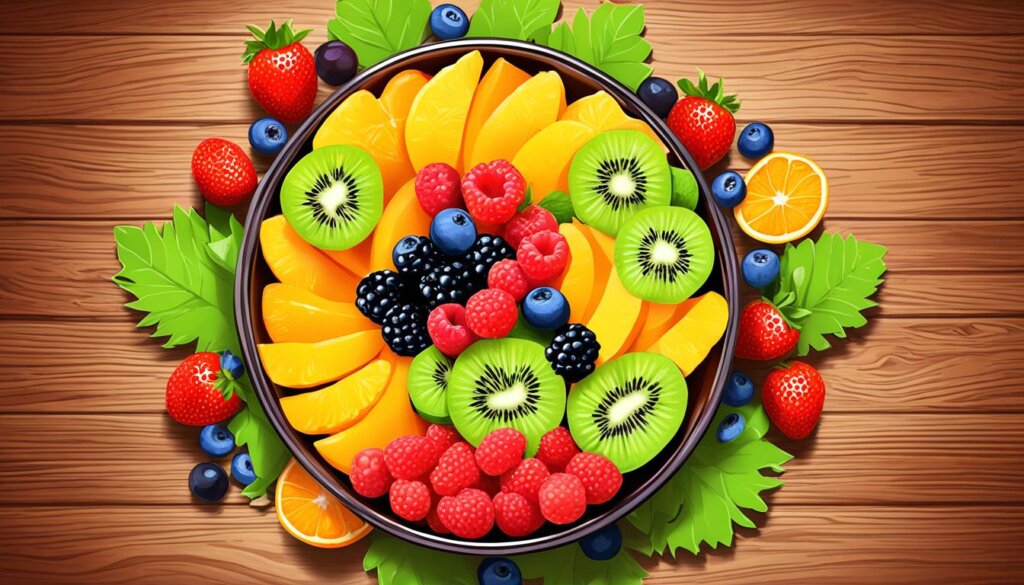
Eating these fiber-rich fruits and vegetables can help you deal with hemorrhoid symptoms. Aim to include them in your meals. The goal is 14 grams of fiber for every 1,000 calories you eat.
Fiber-Packed Legumes and Nuts
Legumes and nuts are great for managing hemorrhoids because they are rich in fiber. Lentils, chickpeas, lima beans, and split peas are among the top fiber sources. For example, one cup of cooked lentils has about 15.6 grams of fiber. Some studies show that green lentils help make stool heavier and move through the colon quicker.
Almonds and pecans are also fiber-rich. Roughly 20 almonds or pecans give you 3 grams of fiber, ideal for a snack. The fiber in these nuts makes stool softer and bowel movements easier. This can help in fighting hemorrhoids.
Lentils and Beans
Lentils and beans stand out for their fiber content. One cup of legumes has 17 grams of fiber. For example, black beans have 5.3 grams of fiber, garbanzo beans have 12.4 grams, and lentils have 15.6 grams per cup. Adding these fiber-rich foods to your meals can help with hemorrhoid symptoms.
Almonds and Pecans
Almonds and pecans are great for fiber too. In each ounce, almonds have 3.5 grams of fiber. Pecans have a similar amount. Eating these nuts as a snack can improve bowel regularity and lessen hemorrhoid pain.
Adding fiber-rich legumes and nuts to your diet is a smart move for hemorrhoid care. These foods are not just rich in nutrients. They also aid in keeping stool soft and promoting regular bowel movements, essential for avoiding hemorrhoids.
Fiber rich foods for hemorrhoids
In the last sections, we talked about the goodness of fiber in whole grains, fruits, vegetables, legumes, and nuts. Other fiber-rich foods are good for fighting hemorrhoids, too. For example, corn has roughly 4.2 grams of fiber per cup and is known as a traditional remedy for hemorrhoids.
Tomatoes and citrus fruits, which have fiber and water, contain a compound called naringenin. This compound can act as a gentle natural laxative, helping ease bowel movements.
We should eat between 20 and 35 grams of fiber every day. Foods like raspberries have about 9 grams of fiber per serving. Dried figs are even better, with a whopping 10 grams of fiber per serving. Eating enough fiber keeps our gut healthy and makes going to the bathroom easier. This can prevent or soothe hemorrhoids and fissures.
Other good sources of fiber include chickpeas (Garbanzo) with 10 grams per 1/3 cup. Cereals like General Mills Fiber One® can add 12 grams of fiber to your diet in just one ounce. But remember, it’s best to add fiber to your diet slowly to avoid stomach issues like bloating and gas.
Women should aim for 25 grams of fiber a day, and men should aim for 38 grams. To meet these goals and keep your digestive system in good shape, eat plenty of fruits, veggies, whole grains, legumes, and nuts.
Food | Fiber Content |
|---|---|
Raspberries | 9 grams per serving |
Dried Figs | 10 grams per serving |
Chickpeas (Garbanzo) | 10 grams per 1/3 cup serving |
General Mills Fiber One® Cereal | 12 grams per ounce serving |
It’s worth noting that a food is considered a “good source of fiber” if it gives you 10% of the recommended daily fiber. That’s about 2.5 grams per serving. Foods that are “rich in,” “an excellent source of,” or “high in” fiber should have 5 grams or more in each serving. A diet rich in fiber can help keep hemorrhoids, diverticulitis, and even colorectal cancer at bay.

Adding a mix of fiber-rich foods to your meals, including whole grains, fruits, veggies, legumes, and nuts, can really help with hemorrhoid troubles. It’s a simple but effective way to look after your gut health.
Vegetables for Hemorrhoid Relief
Vegetables are top choices for fiber. They help people with hemorrhoids feel better. Studies show that fruits and veggies have a lot of fiber. Broccoli and artichokes are especially good. They have a mix of fiber and other health-boosting stuff.
Broccoli and Artichokes
A cup of boiled broccoli has about 5.1 grams of fiber. It’s great for anyone with hemorrhoids. Broccoli has sulforaphane. This can make your digestion better and protect your stomach.
Artichokes are also full of fiber. One medium artichoke has roughly 10.3 grams of fiber.
Potatoes and Sweet Potatoes
Potatoes and sweet potatoes are also good sources of fiber. A medium baked potato with skin has 3.6 grams of fiber. A baked sweet potato with skin has 3.8 grams.
These starchy veggies can make you feel full. They’re a healthy swap for foods low in fiber. Low-fiber foods can make hemorrhoid problems worse.
Eating more of these veggies can help with hemorrhoid symptoms. They encourage regular bowel movements and keep your gut healthy.
“Fiber-rich veggies like broccoli, artichokes, potatoes, and sweet potatoes help with hemorrhoids. They also boost gut health.”
Other Fiber-Rich Foods for Hemorrhoids
There are more foods with a lot of fiber that can help with hemorrhoids. Psyllium husk is great because it’s a kind of fiber that dissolves in water. It makes your stool bigger and helps you poop more easily. Flaxseeds also have fiber in them. They have both kinds of fiber — the kind that dissolves in water and the kind that doesn’t. This can make your poop soft and keep your stomach healthy.
Psyllium Husk and Flaxseeds
Psyllium husk is good for people with hemorrhoids. By absorbing water, it makes stool bigger. This can help you go to the bathroom normally. Flaxseeds also help because they have a mix of fibers. They make your stool soft and your bowel movements not painful.
Adding fiber, like psyllium, to your diet can cut hemorrhoid bleeding by half. Eating foods rich in fiber is good for handling hemorrhoid signs. It’s also good for your stomach in general.

Besides psyllium and flaxseeds, you can get fiber from many other foods too. Things like whole grains, fruits, veggies, beans, and nuts are all great sources of fiber. Eating a mix of these foods can make your stomach work well. It also helps with the pain of hemorrhoids.
“A high fiber diet can prevent hemorrhoids and other intestinal issues like diverticulitis and colon cancer.”
Adding fiber foods to your diet is a good way to deal with hemorrhoids. Start with a little and add more slowly. And don’t forget to drink lots of water for the best results.
Foods to Avoid with Hemorrhoids
Adding more fiber to your diet helps with hemorrhoids. But it’s just as crucial to stay away from certain foods. Things like processed foods, red meat, alcohol, and caffeine can make hemorrhoids worse.
Processed Foods and Red Meat
Processed foods and high-fat, sugary, or refined carb options can up the chance of constipation. This condition starts hemorrhoid flare-ups. Studies also show a high red meat diet might raise hemorrhoid risk. They mess up the stomach’s balance, leading to discomfort during bathroom trips.
Alcohol and Caffeine
Too much alcohol and caffeine can dry you out. This makes your poops harder, and you might push too much. Drinking alcohol can dehydrate you, affecting your poops. It dehydrates you too, making stool harder to pass. It’s a loop that can worsen hemorrhoid pain.
Watch what you eat to ease hemorrhoid trouble. More fiber, lots of water, and avoiding bad-for-you stuff can help a lot. It keeps your gut healthy, lessening the pain of hemorrhoids.
Tips for Managing Hemorrhoids with Diet
Having hemorrhoids can be uncomfortable. But, you can feel better by changing your diet. Start by adding more fiber to what you eat. It’s recommended to get 14 grams of fiber for every 1,000 calories. This will help make your stool softer and your bowel movements more regular.
To avoid gas and bloating, increase your fiber slowly. Add foods like whole grains, fruits, and veggies to your meals. Prunes, pears, and lentils are great choices for more fiber.
Gradually Increase Fiber Intake
- Aim for 25-30 grams of fiber per day, with about a third from soluble fiber.
- Introduce new high-fiber foods slowly to avoid discomfort.
- Choose whole grain breads and pastas over refined options.
- Adding beans and legumes to your meals also helps.
Stay Hydrated
Being well-hydrated is as important as fiber. Aim to drink 8-10 glasses of water daily. Your body needs enough fluid to digest fiber well. This is vital for managing hemorrhoids.
Consider Supplements
If getting enough fiber from food is hard, try a supplement like psyllium husk. These can boost your fiber intake for better bowel movements and less strain on hemorrhoids.
Focusing on more fiber, staying hydrated, and maybe using supplements can help with your hemorrhoids. The right diet changes are key.
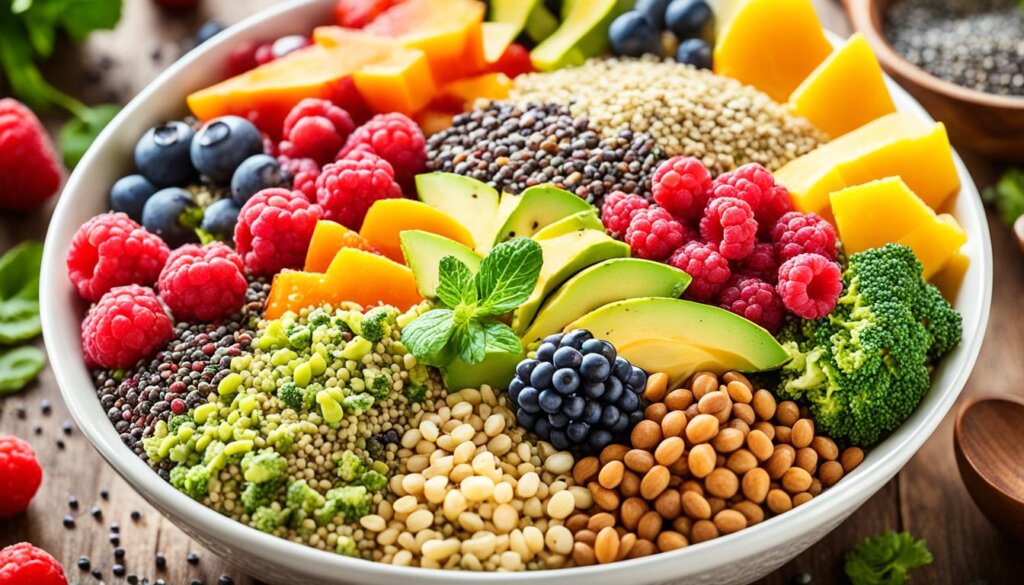
“Properly managing constipation and diarrhea can prevent hemorrhoids.”
When to Seek Medical Attention
Changing what you eat can help with hemorrhoids. But, seek a doctor if they don’t get better in a week or two. In the U.S., 1 in 20 people has hemorrhoids. And half of adults over 50 will too.
Big or stubborn hemorrhoids may need a doctor’s care. You might get medicines, procedures in the doctor’s office, or sometimes surgery. Adding more fiber to your diet can cut hemorrhoid bleeding in half. Doctors can use methods like rubber bands or lasers to treat hemorrhoids at their office. If surgery is needed, they can do a few different procedures to help.
Get help if you have bad anal pain, a lot of bleeding, or if you feel very sick. Hemorrhoids happen for many reasons, like pushing too hard when you use the bathroom. They can also be caused by being pregnant, sitting on the toilet for too long, and more. Internal hemorrhoids might make you see blood after using the bathroom. Or you might feel a bump outside your bottom.
With external hemorrhoids, you might itch, see blood, feel pain, or notice swelling. Prolapsed hemorrhoids could make you feel a lump, itch, or leak mucus. You might also see blood after you go.
Don’t ignore rectal bleeding or pain. If you see blood on toilet paper, feel pain, or have dark stool, talk to your doctor. If store-bought treatments for hemorrhoids don’t work in a week, check with a healthcare provider.
Conclusion
Eating more fiber-rich whole foods like whole grains, fruits, and veggies can help with hemorrhoid issues. These foods make stool softer, heavier, and move faster through your system. This brings relief to people with hemorrhoids. Start by adding more fiber to your diet slowly and drink plenty of water. Doing this, you can improve your digestion and ease hemorrhoid pain.
It’s good for adults to get 25-30 grams of fiber daily to avoid hemorrhoids, says the American Dietetic Association. They suggest 25 grams for women and 38 grams for men every day. A fiber-rich diet can lower body inflammation, helping with hemorrhoid prevention. Plus, fiber softens stool, making it easier to go and lessening the chance of hemorrhoids.
Eat at least 5 servings of fruits and veggies daily, and pick fiber-packed foods like apples, berries, and carrots.
Choosing these makes a fiber-rich diet that fights hemorrhoids. Such a diet also supports losing weight and staying healthy. Don’t forget to add fiber gradually over a few weeks to steer clear of tummy troubles.
FAQ
What are hemorrhoids and what are the different types?
Hemorrhoids, also known as piles, are swollen veins around the anus or in the lower rectum. You might have external ones under the skin near your bottom. Internal ones are inside the anus and lower rectum’s lining.
How can fiber help with hemorrhoid symptoms?
Fiber helps by making stools heavier, quickening the colon’s move, and keeping more water in the colon. This way, stools become softer and pass more easily. This helps with hemorrhoid symptoms.
What are the best fiber-rich foods for hemorrhoids?
The top fiber-rich foods for hemorrhoids are whole grains, fruits, vegetables, legumes, and nuts. Both soluble and insoluble fiber from these foods make stools softer, heavier, and speed up their travel through the colon.
What whole grain foods are good for hemorrhoids?
Choose unprocessed or lightly processed whole wheat, barley, and oats. They are packed with insoluble fiber. This fiber can help with hemorrhoid symptoms.
What fruits and vegetables are high in fiber for hemorrhoids?
Great choices include prunes, apples, pears, berries, broccoli, artichokes, potatoes, and sweet potatoes. They’re all great sources of fiber that can ease hemorrhoid symptoms.
What other fiber-rich foods can be beneficial for hemorrhoids?
Aside from the above, lentils, chickpeas, almonds, pecans, psyllium husk, and flaxseeds are also good. These foods help manage hemorrhoid symptoms.
What foods should be avoided with hemorrhoids?
It’s best to avoid processed foods, high-fat foods, sugar, refined carbohydrates, red meat, alcohol, and too much caffeine. These foods could make hemorrhoid symptoms worse.
How should fiber be increased to manage hemorrhoids?
To manage hemorrhoids, slowly increase your fiber intake to prevent gas and bloating. Try to get 25-30 grams or more of fiber per day. It’s also important to drink 8-10 glasses of water daily.
When should someone see a doctor for hemorrhoids?
If your hemorrhoids stay severe or don’t get better with home care and diet changes within two weeks, see a doctor. Very large or severe hemorrhoids might need professional help.
